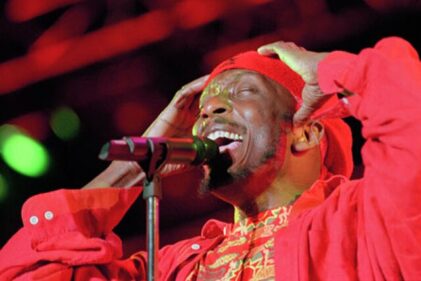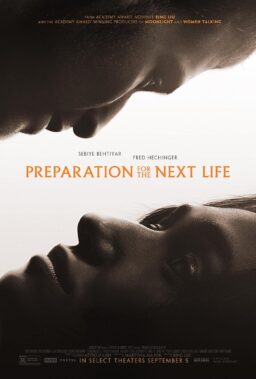It is unusual for a site devoted to movies and television to pay tribute to a Supreme Court Justice. But Justice Ruth Bader Ginsburg, in addition to being a brilliant thinker and jurist, was an icon to millions, especially to women everywhere, and even a pop cultural icon to millenials. Here’s the evidence: what other Supreme Court justice was the subject of both an Oscar-nominated documentary (“RBG”) and a feature film (“On the Basis of Sex”) in the same year, plus was portrayed (okay, caricatured) by Kate McKinnon on “Saturday Night Live”? Further, she is the subject of a popular children’s book about the power of her dissenting opinions. Perhaps most unexpectedly she was even the subject of a book about her exercise routine and the inspiration for children’s Halloween costumes (this year’s “Scoob!” had smarty-pants Velma wearing a Ruth Bader Ginsburg costume for trick-or-treating). When her death was announced last night a large crowd gathered outside of the Supreme Court building and in an impromptu moment began singing “Amazing Grace.”
Justice Ruth Bader Ginsburg, the second woman to serve on the Supreme Court, was a brilliant jurist, an innovative and influential thinker who helped to shape the women’s movement, and, unarguably, a cultural icon. How many other Supreme Court justices are honored in tattoos? “Saturday Night Live” star Pete Davidson has her face tattooed on his shoulder, wearing a crown (symbolic) and her real-life “dissenting collar,” one of the neckpieces she used to adorn her judicial robes and possibly to signal some extra-judicial opinions.
Justice Ginsburg died on Friday at age 87, after multiple health challenges, including lung, colon, and pancreatic cancer. She seemed to emerge from treatment and return to the bench stronger than ever, with sharp questions for the lawyers who argued before the Court and sharper take-downs of her fellow Justices if she thought they were wrong. There will be volumes of heavily footnoted tributes from academics and practitioners exploring the depth of her research and the intricacy—and moral clarity—of her arguments. Lawyers and judges will be combing through her writing for a century to bolster their arguments and opinions.
When Ruth Bader Ginsburg enrolled in Harvard Law School, it was only the sixth year that women had been admitted as students and there were only nine female students in the class. They were all invited to dinner with the dean, who asked them, as we saw in the feature film about her early career, why they were taking up a place that could be filled by a man. As in the film, her answer, more demure than sarcastic, was that she wanted to be able to understand and support her husband’s work as a lawyer.
She had an outstanding record at Harvard and graduated at the top of her class while caring for her ailing husband and their child, but no law firm would hire her because she was a woman. (Her predecessor on the Court, Justice Sandra Day O’Connor, had the same experience; no law firm would hire her as an attorney but one did offer her a position as a legal secretary.) So, Justice Ginsburg began to teach law school, and as an academic, she had the chance to take on cases a private law firm would be unlikely to accept. In both the documentary and the feature film we see her brilliant strategic maneuver. Her first big case on gender discrimination was about a law that infringed the rights of men; only women qualified for government assistance to care for a dependent family member. She knew the male legal establishment would be more likely to recognize injustice if it applied to their own gender.
The six cases she argued as an advocate before the Court, which she would later serve, had as profound an impact on American culture and society as Brown v. Board of Education. Historian Jill Lepore wrote in the New Yorker, “Aside from Thurgood Marshall, no single American has so wholly advanced the cause of equality under the law.”
Justice Ginsburg married her Cornell classmate, Martin Ginsburg, because, she said, he was the only man who was interested in her mind. He was more than interested. He was her support system (he did all of the cooking because she was a disaster in the kitchen) and it was he who advocated for her appointment to the Supreme Court. I had the pleasure of seeing them together at a judges’ conference, and no movie has ever had a more endearing or devoted romantic couple.
Shakespeare could have been describing Justice Ginsburg when he wrote “though she be but little, she is fierce.” Certainly, the contrast between her tiny frame and powerful intellect was part of what made Justice Ginsburg an icon, reflected in the teasing nickname, “Notorious RBG,” inspired by rapper “Notorious BIG.” This month’s documentary “All In: The Fight for Democracy” has a devastating depiction of the impact of the Supreme Court’s overturning of the Voting Rights Act. The voter suppression restrictions adopted within hours of the decision’s announcement proved the accuracy of Justice Ginsburg’s dissent. As with so many of her careful, meticulous opinions on the Court—omitting “respectfully” from one dissent was her version of what Kate McKinnon called a “Gins-burn”—she was ahead of her time. We will honor her memory in the years ahead by letting her example guide us, and by trying to catch up.












